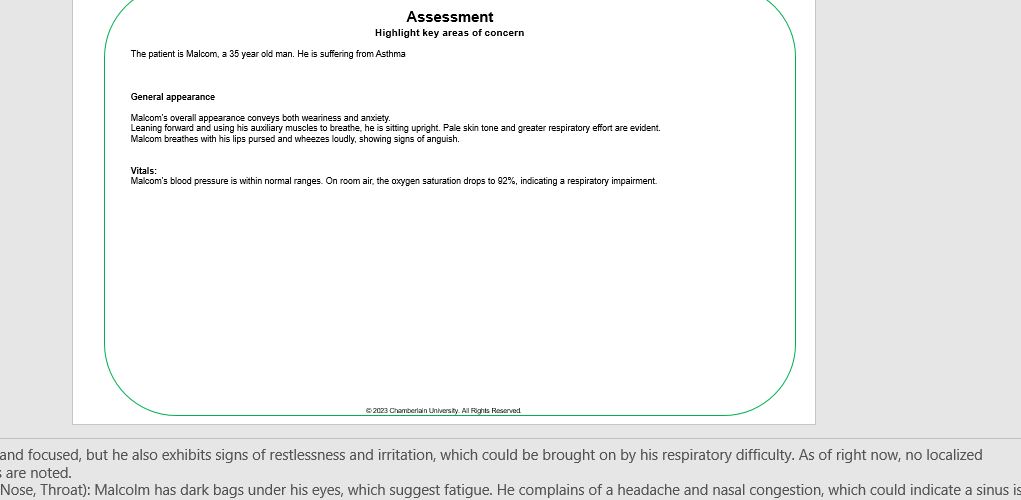Concept Map on a Patient
Purpose
This assignment is designed to extend the learner’s use of concept mapping as a tool for clinical care planning. The nursing process continues to provide the foundation for organizing information and thought, whereas the mapping becomes the process for intentional critical thinking and clinical reasoning.
Course outcomes: This assignment enables the student to meet the following course outcomes:
CO 1: Demonstrate the nursing process while providing basic care to individuals and families reflecting different stages
of the life span in the extended care, acute care, and community-based settings. (PO 1)
CO3: Demonstrate communication skills necessary for interaction with other health team members and for providing
basic nursing care to individuals and families. (PO #3)
CO4: Incorporate critical thinking skills into clinical nursing practice. (PO #4)
Due date: Your faculty member will inform you when this assignment is due. The Late Assignment Policy applies to
this assignment.
Total points possible: 100 points
Preparing the assignment
Follow these guidelines when completing this assignment. Speak with your faculty member if you have questions.
- Choose an individual for whom you have cared in the clinical setting or virtual setting.
- Create a concept map based on the complete physical assessment you performed while providing care using the provided PowerPoint template.
a. Components of the concept map
i. Client’s information (10 points/10%) - Age
- Medical diagnosis/Reason for hospitalization
- Brief review of underlying pathophysiology
*Describe what functional changes are happening
*Describe process that initiated and maintained disorder or disease
- MUST INCLUDE: Scholarly reference to support information
ii. Assessment Data (15 points; 15%)
b. Provide a comprehensive head to toe assessment to include:
i. General appearance
ii. Inspection
iii. Palpation
iv. Percussion
v. Auscultation
c. Highlight key assessment items of concern regarding this client
i. Nursing Diagnoses (15 points/ 15%)
- Select three actual nursing diagnoses for this client (not allowed to use ‘RISK FOR’ diagnosis)
a. NANDA of Actual problem/need that is high priority
b. NANDA of Actual problem/need, not necessarily a high priority
c. NANDA that focuses on psychosocial problem/need
ii. Linkages Within and Between Diagnoses (5 points/5%) - Short summary rationale for why these diagnoses were chosen and how they connect to the client.
iii. Planning (15 points/15%)
- Ensure NANDA diagnosis are appropriate priority
- Develop one (1) short term S.M.A.R.T. goal for each diagnosis
- Develop one (1) long term S.M.A.R.T. goal for each diagnosis
- Provides rational for each short- and long-term goal
iv. Implementation (15 points/15%)
- Provide three (3) client specific interventions to help obtain the short-term goal for each diagnosis
- Provide three (3) client specific interventions to help obtain the long-term goal for each diagnosis
v. Evaluation of Goal/Outcomes (5 points/15%) - Determine if goal/outcomes were met or not.
- Provide evidence that supports that determination.
- Describe what changes, if any, are needed to the plan to promote expected outcomes in the future.
vi. Safety-Communication-Infection Control 16 points/16%)
a. What specific elements of communication were used when providing care for this client,
b. What safety concerns related to the client you cared for
c. What infection control practices were followed while caring for this patient.
vii. APA Citations and Writing (4 points/4%)
a. Minimum of two (2) scholarly nursing references, within 5 years submitted with assignment.
b. Includes intext citation(s) in all appropriate areas (pathophysiology, planning, etc.)
c. Uses appropriate APA format and is free of errors.
d. Grammar is free of errors.
e. Spelling is free of errors.
f. Mechanics of writing are free of errors.
x. Power Point Template (0 points/0%) (deduction if not used)
a. Used provided Power Point Template for assignment completion or an alternate that is approved by
faculty.
Answer preview for Concept Map on a Patient

APA
600 Words
